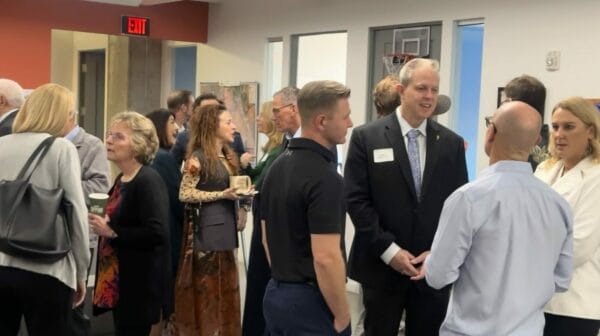
The Colorado River on the border between Arizona and Mexico./Photo: Pete McBride/National Geogaphic Image Collection via Getty Images
As hundreds of migrants flow in each week, the city struggles to provide food and shelter
By Jillian Kay Melchior | The Wall Street Journal
(Editor’s note: Opinion pieces are published for discussions purposes only.)
From Mexico to Yuma, the route for migrants is simple: Walk east. The Colorado River runs gently here, 3 feet at its deepest, so cross it by wading, not swimming. Climb up the bank and into the thick brush. Pass a scorched black tree that was perhaps struck by lightning. Look out for rattlesnakes. The last obstacle, if you can call it that, is a vehicle barrier. Duck under or hop over. Hundreds of footprints mark the way, and the origin of a humanitarian crisis.
Since October more than 42,000 migrants have been apprehended after illegally crossing Yuma Sector’s 126-mile stretch of border, including the swath I visited in April. Government detention facilities are now stretched past capacity. Moreover, nearly 9 in 10 of those apprehended traveled as part of a family unit, and the courts have strictly limited how long children can be detained. After an apprehension, border agents collect biometric data, check for criminal histories, and provide a medical screening. After that, hundreds of migrants are freed each week with temporary legal status as they await their day in immigration court.
These releases are overwhelming Yuma, a border city of 104,000 in southwest Arizona. It has been flooded with migrants—some 2,500 between March 28 and May 7—prompting Mayor Douglas Nicholls to declare a state of emergency April 16. “Releases here have a greater impact than releases in much bigger cities,” Mr. Nicholls tells me. “We’re not in an overrun chaotic situation. We’re in a resource situation that can end up in the other if we don’t address it.”
Yuma has no budget to provide food, shelter or medical care for migrants. So far, the city has received no additional state or federal funds, so Mr. Nicholls is relying on a coalition of nonprofits.












